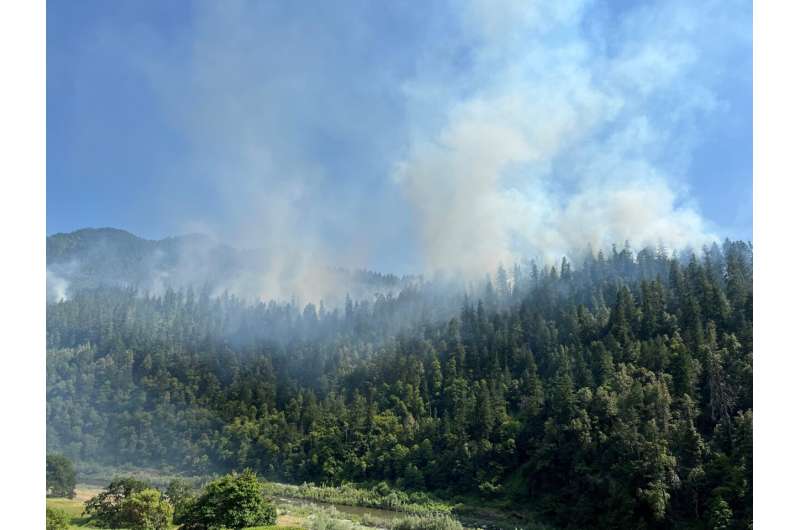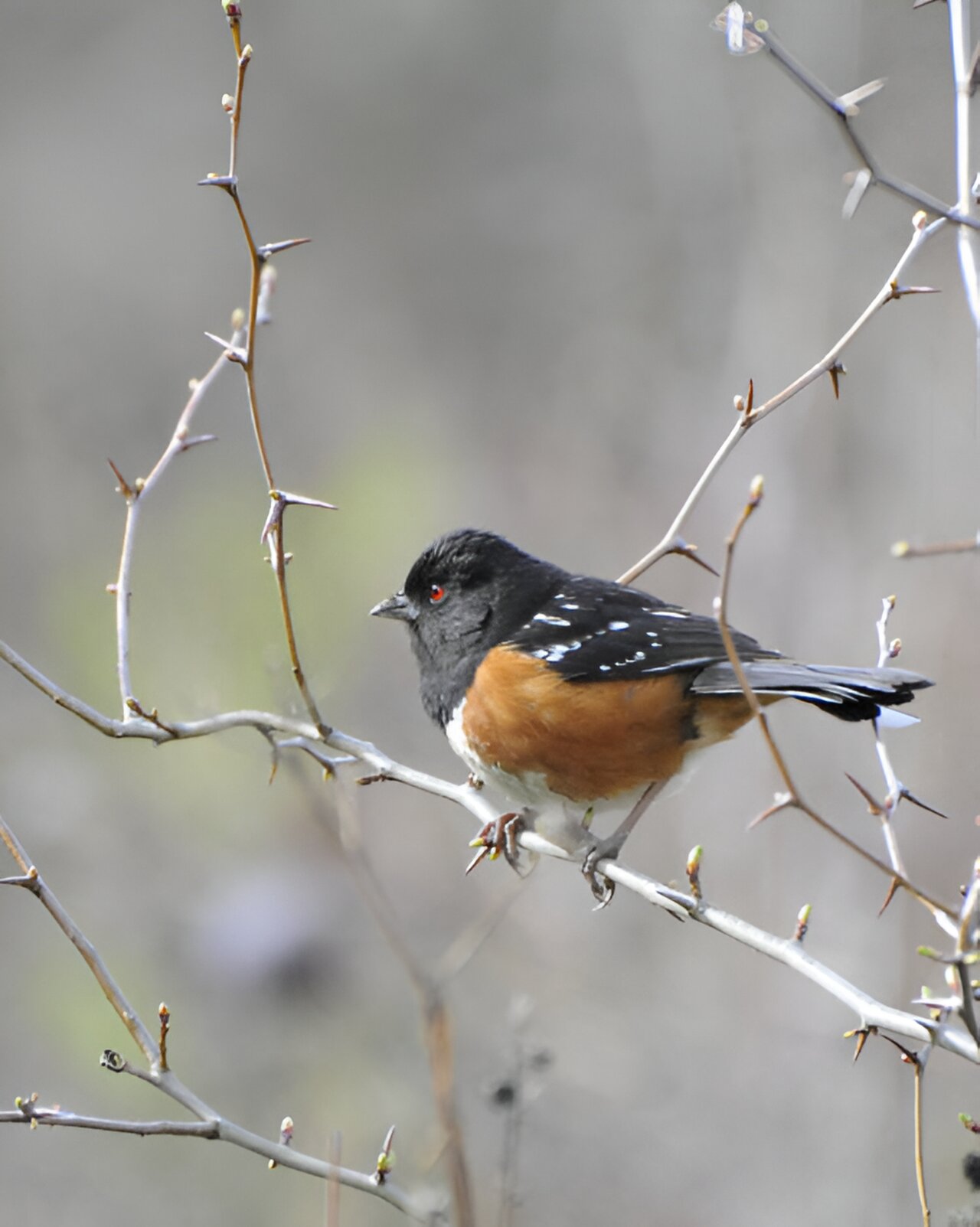PSW ecologist and tribal liaison Frank Lake wondered how the birds he grew up with in northeastern California were faring. As a Karuk tribal descendant with Yurok family, Lake has a deep connection to the land and the birds that inhabit it. Belted kingfishers, woodpeckers, condors, eagles, and other birds have been part of his ancestors’ way of life for thousands of years.
Their familiar site and distinctive calls have made bird watching a national pastime. But our avian companions are declining. According to the 2022 State of the Birds Report, the U.S. and Canada have lost an estimated 3 billion breeding birds since the 1970s.
Pacific Southwest Research Station ecologist and tribal liaison Frank Lake wondered how the birds he grew up with in northeastern California were faring. As a Karuk tribal descendant with Yurok family, Lake has a deep connection to the land and the birds that inhabit it. Belted kingfishers, woodpeckers, condors, eagles, and other birds have been part of his ancestors’ way of life for thousands of years. They grace creation stories and tribes don their feathers in traditional ceremonies.
“Indigenous and western knowledge systems can teach us a lot about the significant roles land birds have in our environment. Understanding how fire and other land management practices may affect birds is important for evaluating the conditions of our ecosystems,” Frank Lake stated.
Learning from the birds
Lake joined forces with research colleague Linda Long, the Klamath Bird Observatory, Karuk Tribe Department of Natural Resources, Michigan Technological University, and others to publish findings on how life cycles of culturally significant birds could inform the timing of prescribed fire. The work appears in Ecosphere.
For 22 years, the research team studied the molting and breeding seasons of 11 different bird families—woodpeckers, owls, hawks, and other species—in Northern California and southern Oregon. Both molting and breeding sap birds’ energy, making them vulnerable to threats, including fire. Molting is a plumage makeover where birds shed old feathers and replace them with new.
Michigan Technological University Assistant Professor Jared Wolfe, stated that “we found, in general, breeding tends to start near the beginning of April in the redwood forests, and later, towards the end of April, in coastal regions and along the Klamath and Trinity rivers.”
Even though prescribed fire can clear the understory of a forest and enhance wildlife habitat, it can also potentially harm birds when it coincides with their molting and breeding seasons.
“Counting birds with binoculars in the field allows us to document trends, but with this information we felt limited to writing their obituaries. We wanted to dig deeper,” Klamath Bird Observatory Executive Director John Alexander emphasized. Alexander and other researchers wanted to know why birds were at a particular location and what they were doing there.
“Our research results provide more precise information about vulnerabilities and threats that can provide guidance and inform the timing of prescribed burns based on birds’ breeding and molting seasons,” Alexander stated.
Alexander and other researchers concluded that cultural burning, which moves to nature’s rhythm, poses fewer threats to culturally significant birds.

Benefits of cultural burning
Before colonization, Indigenous People practiced cultural burning for thousands of years, modifying fire regimes. These low intensity fires promoted healthy forests and enhanced wildlife habitat.
“Fire is medicine to many tribal elders. Fire connects them to the land, and land management policies of fire suppression have, historically, severed that connection,” Lake emphasized.
Lake incorporates western science and Traditional Ecological Knowledge in his research. Both are paramount, he believes, for protecting wildlife, including birds. When Lake shares his knowledge with others, it sometimes broadens their perceptions of conservation.
That was the case for Klamath Bird Observatory Executive Director John Alexander.
“I remember sitting with Frank at a picnic table overlooking the Klamath River. He told me ‘those birds in those bushes where my auntie collected basket materials are important to us. Those individuals are important,” Alexander recounted.
Before considering Lake’s perspective, Alexander was more concerned about getting fire on the ground, even if it meant sacrificing a few birds. He reasoned prescribed burns are critical for mitigating hundreds of years of fire suppression, which can lead to devastating wildfires and decline of healthy forests. Healthy forests promote the long-term survival of different bird species.
“Working with the tribes has made me realize how important cultural burning is. Ancient tribal practices should help inform our prescribed burning practices, and our research about culturally important birds further exemplifies that,” Alexander stated.
Partnerships to protect birds
Alexander is proud of the observatory’s long-term partnership with the Forest Service and former Pacific Southwest Research Station wildlife ecologist CJ Ralph. Together, Alexander, Ralph, and others collected bird data that dates back to the 1980s. Today, that historic data can inform future bird conservation research.
In 2001, these partnerships got a legal boost. That year President Clinton strengthened the Migratory Bird Treaty Act, requiring relevant federal agencies consider how their actions impact bird conservation.
Alexander credits that law and the work of partners for inroads in better understanding our avian companions. He cautions, though, the work is far from done.
“Like birds must adapt to a rapidly changing climate to survive, we must continually learn and adapt our research together to protect birds,” Alexander emphasized.
Alexander serves as a mentor for new researchers in bird conservation. Similarly, Lake is inspiring the next generation of stewards.
“I take young tribal members out to the forest and point out certain birds, explaining their cultural significance and unique life cycles. Both are important to the long-term health of our forests and the birds that depend upon them,” Lake stated.
More information:
Linda L. Long et al, Using culturally significant birds to guide the timing of prescribed fires in the Klamath Siskiyou Bioregion, Ecosphere (2023). DOI: 10.1002/ecs2.4541
Provided by
USDA Forest Service – Pacific Southwest Research Station
Citation:
Avian ambassadors and tribal perspectives: A bird’s eye view of prescribed fire (2024, April 26)
retrieved 28 April 2024
from https://phys.org/news/2024-04-avian-ambassadors-tribal-perspectives-bird.html
This document is subject to copyright. Apart from any fair dealing for the purpose of private study or research, no
part may be reproduced without the written permission. The content is provided for information purposes only.

